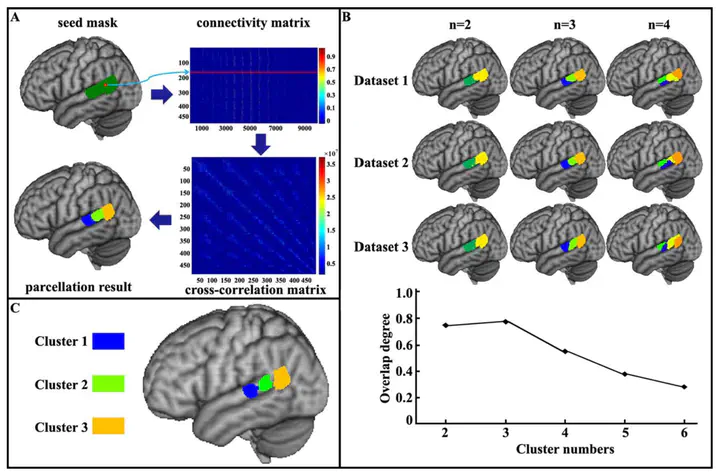Determination of the posterior boundary of Wernicke area based on multimodal connectivity profiles
 pSTG parcellation
pSTG parcellationAbstract
Wernicke’s area is one of the most important language regions and has been widely studied in both basic research and clinical neurology. However, its exact anatomy has been controversial. In this study, we proposed to address the anatomy of Wernicke’s area by investigating different connectivity profiles. First, the posterior superior temporal gyrus (STG), traditionally called “Wernicke’s area”, was parcellated into three component subregions with diffusion MRI. Then, whole-brain anatomical connectivity, resting-state functional connectivity (RSFC) and meta-analytic connectivity modeling (MACM) analyses were used to establish the anatomical, resting-state and task-related coactivation network of each subregion to identify which subregions participated in the language network. In addition, behavioral domain analysis, meta-analyses of semantics, execution speech, and phonology and intraoperative electrical stimulation were used to determine which subregions were involved in language processing. Anatomical connectivity, RSFC and MACM analyses consistently identified that the two anterior subregions in the posterior STG primarily participated in the language network, whereas the most posterior subregion in the temporoparietal junction area primarily participated in the default mode network. Moreover, the behavioral domain analyses, meta-analyses of semantics, execution speech and phonology and intraoperative electrical stimulation mapping also confirmed that only the two anterior subregions were involved in language processing, whereas the most posterior subregion primarily participated in social cognition. Our findings revealed a convergent posterior anatomical border for Wernicke’s area and indicated that the brain’s functional subregions can be identified on the basis of its specific structural and functional connectivity patterns.